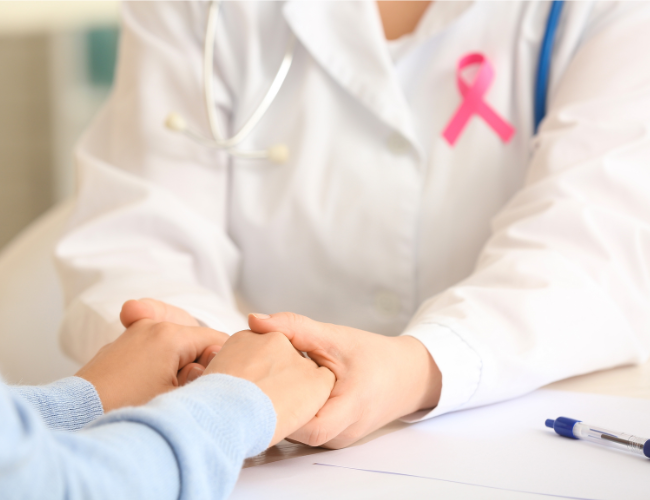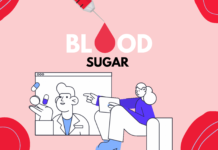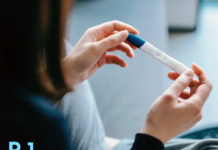Breast cancer diagnosis is a critical aspect of healthcare, yet for LGBTQ+ individuals, there are unique challenges that often result in delayed or inadequate diagnosis.
Melly Testa’s experience sheds light on the disparities and difficulties faced by many within this community.
In this article, we will delve into the specific issues surrounding breast cancer diagnosis among LGBTQ+ people, exploring the root causes, the impact on individuals, and potential steps to bridge this alarming gap in healthcare.

Understanding the LGBTQ+ Breast Cancer Diagnosis Gap
Unanswered Questions: The Journey of Melly Testa
Melly Testa’s journey with breast health reveals the complexities and hurdles faced by LGBTQ+ individuals when seeking a breast cancer diagnosis.
In 2008, Testa noticed alarming symptoms but encountered dismissive attitudes from medical professionals. This initial experience highlights a common theme: the lack of comprehensive care and understanding of LGBTQ+ specific health needs within the healthcare system.
Despite being initially reassured after inconclusive tests, Testa’s condition worsened, leading to a delayed diagnosis and unnecessary suffering.
It’s essential to recognize how Testa’s story epitomizes the systemic challenges and biases that impact many within the LGBTQ+ community, resulting in delayed diagnoses and inadequate support.
| Year | Event |
| 2008 | Noticed bloody discharge from right nipple |
| 2009 | Felt a lump in right breast |
| 2011 | Urged by nurse practitioner to seek answer |
Testa’s experience underscores the need for tailored, inclusive care and proactive measures to address the unique concerns of LGBTQ+ individuals in the realm of breast cancer diagnosis.
Systemic Biases and Healthcare Disparities
The difficulties faced by Testa are not isolated incidents; they reflect broader systemic biases and healthcare disparities prevalent within the LGBTQ+ community.
Every year, over 240,000 people are diagnosed with breast cancer in the United States, per the Centers For Disease Control and Prevention (CDC). But not all breast cancer is treated or diagnosed equally.
Impact on Diagnosis Timeliness
The lack of understanding and sensitivity toward LGBTQ+ individuals can significantly impact the timeliness of breast cancer diagnosis.
A 2023 study published in JAMA Oncology found that LGBTQ+ patients with breast cancer experienced delays in diagnosis and were at three times greater risk of cancer recurrence than their cis, heterosexual counterparts. For Testa, who is both bisexual and nonbinary, the study’s results reflect their own experiences seeking care.
These delays are often exacerbated by the reluctance of medical professionals to provide inclusive care, resulting in missed opportunities for early intervention and treatment.
Barriers to Accessing Inclusive Care
Furthermore, LGBTQ+ individuals frequently encounter barriers when attempting to access inclusive care, including a lack of supportive policies, inadequate provider training, and financial obstacles.
These healthcare disparities are caused by both socioeconomic and structural barriers, according to Shawn Reilly, a nonbinary cancer survivor and a project specialist for the National LGBT Cancer Network. Reilly says LGBTQ+ folks have higher rates of poverty, as well as financial and housing insecurity.
As a result of this instability, LGBTQ+ people are underinsured, less likely to access preventative care — including cancer screenings — and have lower rates of healthcare utilization, says Reilly. Disadvantage compounds, too, along other marginalities like race, ability, and class.
Navigating Inclusivity in Breast Health Services
1. Cultivating LGBTQ+ Inclusive Healthcare Environments
Creating inclusive healthcare environments that cater to the diverse needs of LGBTQ+ individuals is crucial in addressing the breast cancer diagnosis gap.
To get started with a screening, the American College of Radiology released a breast cancer screening guide for trans folks here.
You can also check out Queer Health Is Power, launched by National LGBT Cancer Network, which provides information on screenings and a list of LGBTQ+-affirming providers.
Provider Training and Education
One key step in cultivating inclusivity is implementing comprehensive LGBTQ+ cultural competency training for healthcare providers.
Organizations like Queering Cancer, the National LGBT Cancer Network, and the National LGBT Cancer Project can help connect you to qualified medical providers, relevant research, support groups, and other resources you’ll need to navigate breast cancer as a queer person.
| Key Areas of Provider Training |
|
|
|
Moreover, ongoing education and training programs can help combat implicit biases and misconceptions, empowering healthcare professionals to deliver respectful and effective care to LGBTQ+ patients seeking breast cancer diagnoses.
2. Tailored Support Services and Resources
In addition to provider education, offering tailored support services and resources within healthcare settings is instrumental in promoting inclusivity and addressing the breast cancer diagnosis gap among LGBTQ+ individuals.
Establishing LGBTQ+ support groups, providing access to LGBTQ+ competent mental health professionals, and offering targeted educational materials can enhance the overall patient experience and facilitate earlier detection and intervention.
- Providing LGBTQ+ support groups
- Access to LGBTQ+ competent mental health professionals
- Offering targeted educational materials
Addressing Barriers and Advocating for Change
1. Policy Reforms and Advocacy Efforts
Advocacy organizations, policymakers, and healthcare institutions must collaborateto develop and implement policies that prioritize LGBTQ+ inclusivity and equity within the healthcare system.
By advocating for anti-discrimination measures, expanding access to LGBTQ+ affirmative care, and allocating resources specifically aimed at addressing the unique needs of LGBTQ+ individuals, substantial strides can be made in dismantling barriers to timely breast cancer diagnosis.
Legislative Measures
Legislative measures play a pivotal role in effecting change and ensuring that laws safeguard the rights and well-being of LGBTQ+ individuals in healthcare settings.
Advocating for anti-discrimination laws that explicitly protect LGBTQ+ individuals from mistreatment and prejudice can significantly enhance their ability to seek timely breast health services without fear of bias or discrimination.
| Key Legislative Measures for LGBTQ+ Healthcare |
|
|
|
These efforts are essential steps toward establishing an inclusive healthcare landscape that prioritizes the specific needs of LGBTQ+ individuals, ultimately narrowing the breast cancer diagnosis gap within this community.
Community Engagement and Empowerment
Empowering LGBTQ+ communities to actively engage in their own breast health advocacy is integral to fostering positive change and bridging the diagnosis gap.
Initiatives that promote community involvement, such as awareness campaigns, support networks, and educational workshops, serve as vital tools in equipping individuals with the knowledge and resources needed to navigate breast health services effectively.
Conclusion: Paving the Way for Inclusive Breast Health Services
In conclusion, the breast cancer diagnosis gap among LGBTQ+ individuals represents a critical issue shaped by systemic biases, healthcare disparities, and the unique challenges faced by this community.
Melly Testa’s journey underscores the urgent need for tailored, inclusive care that addresses the specific needs of LGBTQ+ individuals seeking breast health services.
By understanding the experiences of individuals like Testa, acknowledging systemic biases, and advocating for comprehensive reforms, it becomes possible to pave the way for inclusive breast health services that prioritize equity, respect, and proactive care for all LGBTQ+ individuals.
Embracing intersectional approaches, cultivating inclusive environments, and advocating for policy reforms are pivotal steps toward narrowing the diagnosis gap and ensuring that LGBTQ+ individuals receive timely and accurate breast cancer diagnoses.



















